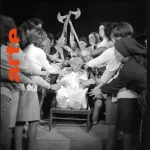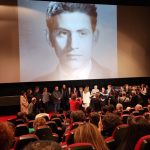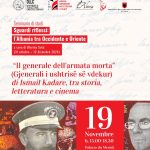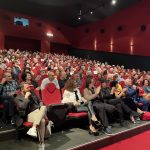| Reference Code | I/2-101 |
| Title | Aleksander Moisi |
| Synopsis | The documentary begins with images of Aleksander Moisiu. An exhibition and the city of Kavaje where A. Moisiu lived. The house where his family lived, the church and the register of baptisms. The coastal area where his father left when he was young for work reasons. He went to Trieste, Italy, where he married Fiorentina De Raden. Trieste during 1880-1884. His father returning to Durres together with the family. The house where his family lives, its rooms and the classroom of the school where Aleksandri studied. The road he went home or to his father’s shop. His family goes with him to Trieste and after 9 years he returns to the motherland on the occasion of his sister’s marriage. At the beginning of the 20th century he settled in Vienna where he gained fame as a great artist. The city of Vienna. The great theatre of Vienna where he worked as an actor. Displaying his strength in the first roles he performed. Various photos of his roles. German director Mark Reinhard supported him. The “Fraus Meor” one of his most famous roles. Document talking about this interpretation. Performing “Romeo and Juliet” role. (283. 25m). Images of the protagonists, then his words (synchronous). The Brandenburg Gates and A. Moisiu double exposure, (synchronous) recitating. The movie “Lorenzo de Medici” where Moisiu plays as the main protagonist. He successfully interprets the role of Fedia in Tolstoy’s “Living Corpses”. The role that gave the actor great fame was Hamlet. Performing the monologue “to live or not to live” (synchronized). His photograph, his bust in the role of Hamlet at the National Theatre. Reciting “The November Wind” (synchronized), it is accompanied by storms, crackling, thunderbolts, etc. Vienna park, pelican in the water and the bench where A. Moisiu rested, a photo of him in the park. (278. 20m) Urban streets 40 km from Vienna where A. Moisiu lived. The house where he lived. The old gardener who worked for the family Moisiu talking to some young Albanians about his life. The room. Photo of Moisiu with his mother and his wife Johana Terain. The document that shows that A. Moisiu, even though he was abroad, was honoured to be an Albanian. Civil status book where A. Moisiu and Joana Moisiu were registered in 1934. A photo of Moisiu in the Albanian areas of Budapest. The magazine “Djaleria” 1920 reporting about the reception given to Moisiu by the Albanians. Visiting Moscow in 1922 and 1924. The reception given to him at the station and the meetings with the leaders of the Soviet state such as Lumacarkesi and Soviet artists. The letter Moisiu sent to Stanislavski. Photograph of Stanislavski (Russian art critic). View of the Kremlin. Moisiu reciting (synchronized). Aleksander Moisiu passed away on March 22, 1935. His wife Johana sends a letter to the Albanian People’s Theatre emphasizing : “I am sorry that I am not able to come to Albania to see the progress made by his homeland which he loved so much”. (296. 60m) Documentary made on the occasion of the 25th anniversary of the death of the great artist Aleksander Moisiu. |
| Awards | |
| Screenwriter | Aleks Buda V Taci |
| Scriptwriter | Xhemal Broja |
| Director | Shkelzen Shala |
| Composer | |
| Camera | Agim Fortuzi |
| Designer | Vasil Lalo |
| Editing | Irena Harito |
| Sound | |
| Category | Documentaries |
| Chroma | |
| Year | 1960 |
| Release date | 1960 |
| Reels | 3 |
| Lenght (in minutes) | 28 |
| Country of origin | Shqiperi |
| Shooting locations | |
| Producers | |
| Notes | |
| © Copyright | Arkivi Qendror Shtetëror i Filmit |
Share This Article




